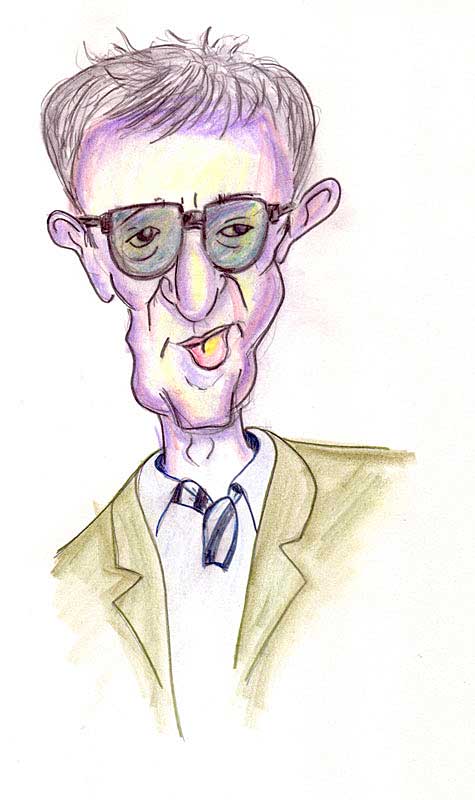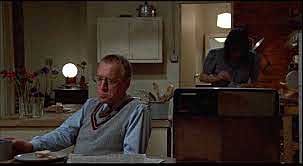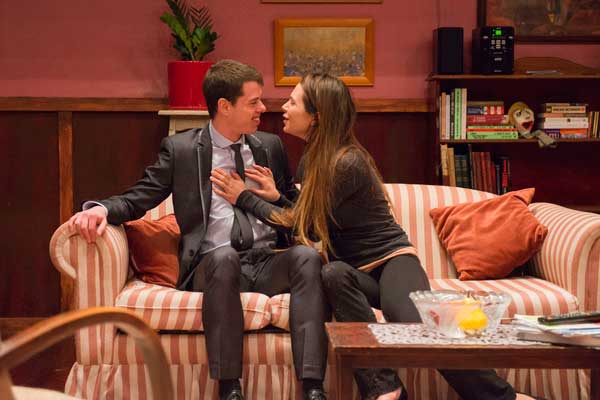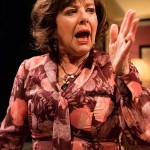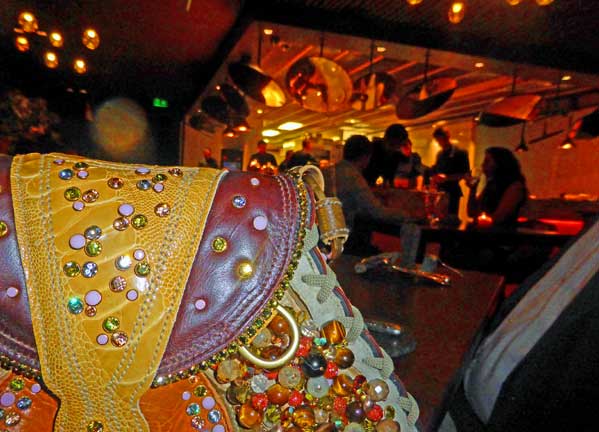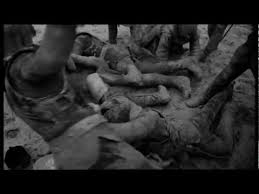The Varnished Culture's Thumbnail Reviews
Regularly added bite-sized reviews about Literature, Art, Music & Film.
Voltaire said the secret of being boring is to say everything.
We do not wish to say everything or see everything; life, though long is too short for that.
We hope you take these little syntheses in the spirit of shared enthusiasm.
The Adelaide Ring
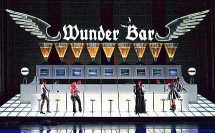
(2004: Recording 2012)
The Varnished Culture is leery of greatest hits records. Everyone’s CD cupboard bursts with them, especially those replenished after an insurance claim. Yet with The Ring, one can make an exception. Especially when this is the only record of the sublime Adelaide production seen in 2004, when little Adelaide’s gallant attempt to simulate Bayreuth was almost scuttled by a relatively new State Government (which is still the State Government) quibbling about funding. Thankfully, a Commonwealth Grant to the Melba Foundation cleared the way.
The Adelaide Ring was the first ‘ground up’ production in Australia and many feared it would be a damp squib, without support from the government, or, regretfully, the ABC. In the event, with Asher Fisch conducting the ASO beautifully (and in cycle 2, the Vorspiel from Rheingold faultlessly in pitch darkness), production design by the Great, late Elke Neidhardt, and an incomparable cast**, it proved a miraculous triumph, an almost perfect staging of Wagner’s monster, and it is a shame that it has never been repeated (nor filmed). 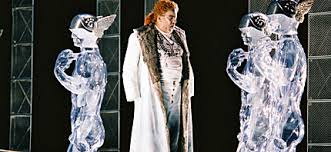 After much talk of a complete record of the cycle, in 2012 came a small but choice memento, produced by Maria Vandamme and Ian Perry, of highlights of the 2004 production. The selection is, as it had to be, judicious* and here we can revisit some of the more sumptuous moments, beautifully and crisply mixed and mastered. The Varnished Culture‘s only real quibble – some tracks stop abruptly despite obviously running on to a new piece in the original performance.
After much talk of a complete record of the cycle, in 2012 came a small but choice memento, produced by Maria Vandamme and Ian Perry, of highlights of the 2004 production. The selection is, as it had to be, judicious* and here we can revisit some of the more sumptuous moments, beautifully and crisply mixed and mastered. The Varnished Culture‘s only real quibble – some tracks stop abruptly despite obviously running on to a new piece in the original performance.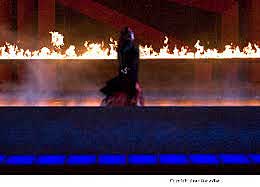 This was the first time P had seen the Ring and he retains a nostalgic reverence for it, but it is a matter of great fortune that we live in the time of hi-fidelity recording (what would Wagner have made of it!) and short of the entire work, or a new production, this will more than do. The highlights offered in this album are:
This was the first time P had seen the Ring and he retains a nostalgic reverence for it, but it is a matter of great fortune that we live in the time of hi-fidelity recording (what would Wagner have made of it!) and short of the entire work, or a new production, this will more than do. The highlights offered in this album are:
*Das Rheingold (I) Vorspiel (ii) Erste Szene: Wohl sicher sind wir und sorgenfrei (iii) Vierte Szene: He da! He da! He do! (The Rhine begins to flow at the dawning of the world; Alberich renounces love and steals the Rhinegold; the Gods enter Valhalla).
Die Walküre (I) Erste Aufzug: Vorspiel (ii) Erste Aufzug, Dritte Szene: Winterstürme wichen dem Wonnenmond; (iii) Zweiter Aufzug: Vorspiel (iv) Zweiter Aufzug, Zweiter Szene: So sah ich Siegvater nie (v) Dritte Aufzug, Erste Szene: Ride of the Valkyries (vi) Dritte Aufzug, Dritte Szene: Leb’ wohl, du kühnes, herrliches Kind! (Siegmund’s love song; Brünnhilde gets an unwanted order; Wotan waves Brünnhilde bye-bye).
Siegfried (I) Erste Aufzug, Dritte Szene: Notung! Notung! Neidliches Schwert! (ii) Dritte Aufzug, Dritte Szene: Ewig war ich, ewig bin ich (Siegfried goes wild; Siegfried & Brünnhilde enjoy an idyll).
Götterdämmerung (I) Prolog: Tagesgrauen und Siegfried’s Rheinfarht (ii) Dritte Aufzug, Zweiter Szene: Trauermusic beim tod Siegfried (iii) Dritte Aufzug, Dritte Szene: Starke Scheite schichtet mir dort – (The Rhine journey; Siegfried’s funeral march; Brünnhilde’s immolation).
**The splendid cast comprised Jennifer Barnes (Grimgerde); John Bröcheler (Wotan); Andrew Brunsden (Froh); Elizabeth Campbell (Fricka, Waltraute in Götterdämmerung); Christopher Doig (Loge); Timothy Du Fore (Donner); Donna-Marie Dunlop (Wellgunde & Rossweise); Lisa Gasteen (Brünnhilde); Richard Greager (Mime); Lisa Harper-Brown (Ortlinde); David Hibbard (Fafner); Natalie Jones (Woglinde); Liane Keegan (Erda, Waltraute in Die Walküre & First Norn); Kate Ladner (Freia, Helmwige & Third Norn); Gaye MacFarlane (Siegrune & Second Norn); Zan McKendree-Wright (Flosshilde & Schwertleire); Duccio dal Monte (Hagen); Timothy Mussard (Siegfried in Götterdämmerung); Gary Rideout (Siegfried in Siegfried); Deborah Riedel (Sieglinde); Stuart Skelton (Siegmund); Elizabeth Stannard (Gerhilde); and John Wegner (Alberich).
As they say of sporting teams, all played well (extra bouquets for Alberich, Brünnhilde, Freia, Fricka, Loge, Mime, Siegmund and Wotan.)
Continue Reading →Woody Allen’s Moral Universe
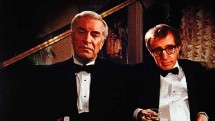
The Varnished Culture is conflicted: L dislikes Woody with his gaunt, Hebrew gamines, his obsessions, his recherché nostalgia, his nihilistic sentiment and relentless chauvinism. P loves him, truth to tell, for the same reason. He cites a brace of films, maybe with one addition, as examples of his comic, cosmic, genius: Hannah and Her Sisters, Crimes and Misdemeanours, and Husbands and Wives.
These films suffer, like his other works, from a stuffy and noisy egocentricity but they are also, by far, the best depictions of modern morality – wise and wicked. Check out, for example, Judy Davis’ sublime failure to succumb to the new separation-scenario in Husbands and Wives, or the golden moment when Woody, with a crinkly laugh-and-gesture, reprises the Aristocrats at dinner with proto-fascist Hitler-type Lester (in Crimes and Misdemeanours). Or the cringe-worthy fumbling of a brilliant Michael Caine in Hannah.
Allen’s work is always worthwhile, even and perhaps because, you violently disagree with, or reject it. Despite his apolaustic film-world (no one has a real job, everyone lives in apartments on the Upper East Side, days are for the cinema, evenings the opera), he is an artist of serious consideration, the worth of which will take time to decide. There are fairly glib references to western culture in his films which evoke love, hate, and regret for lost possibilities, redolent of Mr Allen’s assertion that “His one regret in life is that he is not someone else.”
Continue Reading →Shop Til You Drop

If Shop Til You Drop were a woman, her name would be Symantha. Symantha is a nail technician but she’s trying out for “Australian Idol” and her friends say she’ll win. Symantha’s living with her boyfriend but she’s ditching him soon and her friends say she should. Symantha’s friends LOVE her selfies and say she should try modelling.
Once upon a time, I woke like Sleeping Beauty from a years-long coma during which I had worn the same out-dated princess outfit. I swept out into an unknown world (known as “The Newsagents”) and saw Shop Til You Drop. I thought it was a joke. But, wiping the sleep from my eyes, I bought a copy (the first hit is not always free) and now I am an addict.
I LOVE all that cheap-to mid-range tat. I LOVE IT! The magazine has gone from weekly (I LOVED that) to quarterly or seasonal or something, which is so not-cool. Its perusal calls for the attention-span of a gnat. The pictures are punctuated by words, but the words are harmlessly corralled into circles and squares and arrows and side-bars so they don’t hurt too much. It’s got LOTS of STUFF in it about STUFF and I LOVE it.
VERDICT: If you:-
(a) have ever signed your name with a heart over the “i”,
(b) think the Benefit makeup counter is pretty, while the MAC counter is edgy, and
(c) would SO wear a pair of gladiator sandals,
then buy it every err…whenever it’s out.
Continue Reading →In Style (Australia)

If the Australian edition of In Style were a woman, her name would be Alyssä and she would be the PA to the CEO of an interior design firm whom she hopes to marry when his wife gives up on the botox. Alyssä would wear Armani culottes to theatre first nights. She wouldn’t think much of you.
The Good: In Style is much more likeable than Alyssä, its corporal manifestation. It is a truly terrific and selective catalogue of upper-mid-market fashions, arranged into useful categories. It does an admirable job of showing how to style and combine these expensive things. It shows you clearly who has been wearing what. It takes it all very seriously.
The Bad: There’s nothing to read in it. That wouldn’t be a problem except that it keeps trying to pretend that there is. Don’t bother to even glance at the breathless articles about Anne Hathaway or some American tv star you’ve never heard of. Sadly, the magazine also staunchly holds that it is tapping into the zeitgeist by dressing a soap-star in Gucci and quoting said soap-star on the authenticity of her latest indie project. Just show the clothes!
Both Good and Bad – More effort goes into the hair and makeup pages in In Style than in most other fashion magazines, but I still find them to be curiously inaccessible.
THE VERDICT : Fashionistas subscribe! For God’s sake keep up the botox.
Continue Reading →The Doomsday Book

(Connie Willis)
Connie Willis’s To Say Nothing of the Dog (1998) time-travel novel was so disappointing that this (often hasty) reader determined to read and to say nothing of this author again. However, the main ingredients of The Doomsday Book (1992) (Oxford, time travel, Middle Ages) were interesting enough to cause this (often ridiculously optimistic) reader to give Willis another go.
I hoped that the author might have honed her skills after finishing To Say Nothing of the Dog, and have travelled back in time to improve the earlier novel. Or something. But I was (surprisingly) wrong. An amusing idea is thinly imagined and stretched. The cast of characters are all types, some of them inserted into the plot (such as it is) for heavy comedic effect. The important error which has obviously been made in setting the time travel coordinates is slowly and tediously uncovered and never properly explained to the reader (well it is time travel after all).
Thwarted telephone conversations play an important part in a 21st century which has time travel technology but no mobile phones. Bell-ringers are funny because they are eccentric (particularly when they are American). The plague was nasty. There was no cure. YA writers did this so much better in the 60s and 70s.
Continue Reading →Who’s Afraid of Virginia Woolf?
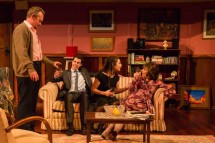
(Dir. Geoff Brittain) Adelaide University Theatre Guild, 15 August 2015
This ivy-league Greek tragedy, a superb three-act melodrama by Edward Albee, was filmed in 1966 by Mike Nicholls, using camera-men suspended from ropes to achieve the claustrophobic intimacy the piece requires.
The action occurs in the sprawling living room of George and Martha, a New England University history professor and his wife, the daughter of the Vice Chancellor. A Saturday evening faculty party has been in swing and Martha wants to party on, inviting newbies Nick and Honey back to their house. As the night unfolds, Mario-Lanza-amounts of liquor take effect, tempers flare, and secrets are revealed in spectacular and devastating fashion.
In this Theatre Guild production, there’s some minor tweaking: the Chicago film reference is updated to the Catherine Zeta-Jones version [note to movie buffs; the film Martha has in mind is Beyond the Forest, 1949, Warner Bros.] and 3 acts are neatly compressed into two, with some of the dialogue cut, but essentially it plays as written; in other words, like a dream. Harold Hobson in the Sunday Times appraised the piece as having “an intensity, a demoniac misery, a ferocious humour…no one can remain indifferent to its power, its resilience of ideas and its range of language.”
Albee’s most famous play is vivid, verbose, and vehemently personal. The performances are critical. Any weak link can undermine the whole chain. Apart from a tendency to let the Boston (and Kansas) accents come and go, in this production all four actors are a revelation. Mark Healy is terrific as the opportunistic Nick, smug, petulant, and on the make, awfully slow to realise how out of his depth he is. No one could erase the memory of Sandy Dennis’ staggering film performance as the brandy-soaked, slim-hipped, nerve-storm that is Honey, but Jessica Carroll manages to convey Honey’s profound sadness with a superb, un-showy rendition.
George is the anchor role and Chris Leech grounds him in a fine, knowing, stoical manner, cleverly balancing his sense of waste and failure with burgeoning reserves of determination. The pyrotechnical character of Martha is brilliantly realised by Julie Quick and the overall effect is to revivify the play without overcooking it, as the film version tends to do. In sum, the performances are magnificent.
The play’s conclusion, after such an excoriating catharsis, is quiet, yet intense, and hangs by a delicate thread. If it is not handled just right, it can be mawkish and unconvincing. Here, it is beautifully done, managing to be moving and true. All in all, this is what an evening at the theatre should be. Why are mainstream Theatre Companies putting on heavily subsidised trash, when the SA Theatre Guild, on a relative shoestring, can put on a classic, and hit it for six?
Liz would have liked Ms Quick’s performance:
The Aristocrats
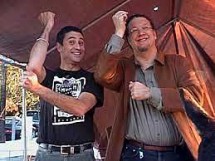
(Dir. Penn Jillette & Paul Provenza) (2005)
The Varnished Culture‘s late great friend, Dr David Barnes, loved this film, a quirky, tight, one-joke riff on the old vaudeville set-up where a truly disgusting and depraved act, auditioned before the jaundiced and horrified agent, is entitled “The Aristocrats!” As Drew Carey observes, the punchline is enhanced if you say it with a grand flourish of the arms.
The challenge is to make the middle of the joke, a description of the act, as deviant, degenerate, debased, degraded, immoral, reprobate, debauched, dissolute, lewd, obscene, sordid, wicked, vile, base, iniquitous, vicious, brutal, criminal, warped and twisted as possible. Many heroic attempts keep the entertainment high, but TVC ‘s favourite is Wendy Liebman’s inverted take, where a depiction of a charming afternoon tea among well-to-do, eloquent, loving, well-mannered folks, is graced with the charming rubric: “The ****sucking mother******s”.
The Newsroom

A witty, eloquent and glossily produced mockumentary about a TV news service and all the time the talent and crew spend agonising about morals, just like they don’t in real life. Entertaining but you are driven to recall P. J. O’Rourke’s question: “Why does the Left assume we’re all as stupid as they are?”
Continue Reading →Vue de Monde

July, 2015
The Vanished Culture had previously enjoyed the street level, race trim sister, Bistro Vue. But nothing had prepared us for Vue de Monde – 55 levels steeper and taller than its sister in every way.
Degustation is a horrible word but, since Vue de Monde, it is one of The Varnished Culture‘s favourites. We took our phlegmatic Melbourne relative N (a chicken-and-chips man) there mid week and even he was impressed – although you wouldn’t know. Don’t go there if you don’t like culinary experimentation and weirdness. Strange and magical little courses were served (and explained) by enthusiastic staff, the youngest one so new that he shook with nerves.
A bread-crumbed marshmallow amuse-bouche substituted for the non-seafood eater P. Crystals of a silvery liquid were tossed across the table. Apparently decorative rocks and twigs were pressed into service. John Lethlean apparently regards the cutlery as ‘frankly – vulgar’ – frankly, this surprises. It is odd to situate a fancy restaurant in an erstwhile office floor (and warning, the prices are above the reach of your average clerk) but it works – decked out in black and shiney – Vue de Monde is as elegant as it gets.
THE MENU
Oyster Salt cured wallaby Burnham Beeches quail egg Jerusalem artichoke
~
Cauliflower, almond
~
Prawn, cauliflower, almond
~
Kangaroo, foraged mushrooms
~
Duck yolk, pear, macadamia, truffle
~
Cucumber, wood sorrel
~
Marron, moonshell clams, mudcrab, fennel Duck, eggplant, quinoa
~
Barramundi, cabbage, red wine
~
Flinders Island lamb, leek, apple
~
Blackmore Wagyu, variations of turnips
~
Butternut squash, sunflower seeds, passionfruit
~ Pear, celeriac, lemon myrtle
~
Chocolate, berries
~
A selection of petit-fours
~
2010 Rimbert, Saint-Chinian, France
2013 Shaw & Smith, Adelaide Hills, South Australia
One might ask, reading the menu above. “where’s the food?” but although the portions were nouveau-cuisine miniature, one felt full about 70% of the way. Waiters are genuinely and infectiously enthusiastic about the fare but we were given plenty of time and space to talk as well, which is welcome.
Continue Reading →Chimes at Midnight
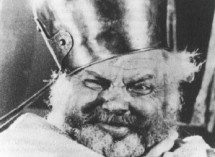
(Dir. Orson Welles) (1966)
Welles amalgamates Shakespeare’s Henry plays and more: apparently made on a shoestring, in Spain, and technically a shambles, it still reeks of authenticity (like Welles’ Macbeth and Othello) and soars due to sterling performances and a script justly centred on the père / fils triangle between Henry IV (a chilly, imperious John Gielgud), Falstaff (a rambunctious Welles) and young Prince Hal, errant royal buck soon to grow (or shrivel) to dour, dismal, ungrateful King.
Falstaff is a giant figure in literature (other than in adapted, borrowed and diminished form in the Bard’s by-the-numbers comedy) and here Welles, himself a famous big talker and big liver, plays him gloriously. Welles’ unerring dramatic sense of stage and film, and the Spanish wind, rain, and mud, is used to convey a great rich flurry, with resources on a very small scale, vindicating President Coolidge’s dictum that “economy is idealism in it most practical form.”
(Orson Welles 6 May 1915 – 10 October, 1985)
Continue Reading →
